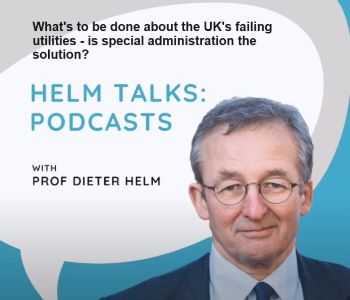Glaciers in Patagonia, which cover parts of Argentina and Chile, followed by those in Alaska and its coastal mountain ranges have overall been losing mass faster and for longer than glaciers in other parts of the world.
 These are among the findings of a new report - High mountain glaciers and climate change - compiled by the UN Environment Programme (UNEP) in partnership with scientists and research centres from around the world, including the Norwegian Polar Institute and Norut Alta.
These are among the findings of a new report - High mountain glaciers and climate change - compiled by the UN Environment Programme (UNEP) in partnership with scientists and research centres from around the world, including the Norwegian Polar Institute and Norut Alta.
The third fastest rate of loss is among glaciers in the northwest United States and southwest Canada followed by ones in the high mountains of Asia, including the Hindu Kush of the Himalayas, the Arctic and the Andes. Overall Europe's glaciers have been putting on mass since the mid-1970s but this trend was reversed around the year 2000.
While the overall trend is down, higher levels of precipitation in some places has increased the mass and in some cases the size of glaciers, including in western Norway, New Zealand's South Island and parts of the Tierra del Fuego in South America. Some mountain ranges are experiencing apparently contradictory effects. In smaller areas of the Karakoram range in Asia, for example, advancing glaciers have even over-ridden areas that have been ice-free for some 50 years. Meanwhile, in the Tianshan and Himalayan mountain ranges, glaciers are in fact receding - and some rapidly.
"Accumulation of science shows us a clear general trend of melting glaciers linked to a warming climate and perhaps other impacts, such as the deposit of soot, reducing the reflection of heat back into space", says UN Under-Secretary-General and UNEP Executive Director Achim Steiner. "This report underlines a global trend, observed over many decades now in some parts of the globe, which has short and long-term implications for considerable numbers of people in terms of water supplies and vulnerability".
"Without doubt the main driving force behind the rapid melting of Himalayan glaciers and formation of the catastrophic Glacial Lake Outburst Floods (GLOFs) is warming due to climate change. The risk to lives and livelihoods in the fragile Hindu Kush Himalayan region is high and getting higher. Immediate action by the global community on launching long-term adaptation and resilience-building programmes is urgently needed," said Madhav Karki, Deputy Director General, International Centre for Integrated Mountain Development.
Key Findings from the New UNEP Report
- Melting glaciers could, in some places and perhaps in a matter of a few decades, cause a reduction in water availability in dry areas, such as in Central Asia and parts of the Andes
- In dry regions of Central Asia, Chile, Argentina and Peru, where there is little rainfall and precipitation, receding glaciers will have much more impact on the seasonal water availability than in Europe or in parts of Asia, where monsoon rains play a much more prominent role in the water cycle.
The report says that many glaciers may take centuries to fully disappear but underlines that many low-lying, smaller glaciers, which are often crucial water sources in drylands are melting much faster. In some regions, it is very likely that glaciers will largely disappear by the end of this century, whereas in others glacier cover will persist but in a reduced form for many centuries to come.
As glaciers melt, lakes held back by walls of mud, soil and stones can form, holding back sometimes millions of tonnes of water which can put at risk villagers and infrastructure, such as power plants.
Over 5,000 people are killed in Asia every year by flash floods and hundreds of thousands of people have been impacted in the mountain regions. The challenge of Glacial Lake Outburst Floods comes against the background of increasing concern over the impacts of extreme weather events such as flash floods on lives and livelihoods. Annually an estimated 100 to 250 million people every year are affected by flooding.
The report is calling for more investment in glacial research and monitoring and says that studying and modeling the runoff from glaciers and rivers and analyzing future variability linked with climate change is a complex but necessary undertaking.
.

 Balfour Beatty, the UK’s largest construction and infrastructure provider, has delivered exceptional environmental results on the Thames Estuary Asset Management 2100 (TEAM2100) framework, one of the nation’s most ambitious flood defence initiatives.
Balfour Beatty, the UK’s largest construction and infrastructure provider, has delivered exceptional environmental results on the Thames Estuary Asset Management 2100 (TEAM2100) framework, one of the nation’s most ambitious flood defence initiatives. The Silvertown Tunnel’s pumping system is reducing the risk of flooding, delays and costly maintenance, while supporting the long-term resilience of London’s transport network, says Ian Ireland, large pumping projects programme manager, Xylem UK.
The Silvertown Tunnel’s pumping system is reducing the risk of flooding, delays and costly maintenance, while supporting the long-term resilience of London’s transport network, says Ian Ireland, large pumping projects programme manager, Xylem UK.

 Hear how United Utilities is accelerating its investment to reduce spills from storm overflows across the Northwest.
Hear how United Utilities is accelerating its investment to reduce spills from storm overflows across the Northwest. What is to be done about the UK’s failing utilities? Listen to Professor Dieter Helm explore the options to tackle the UK’s failing utilities – Thames Water, the Royal Mail and Network Rail in particular.
What is to be done about the UK’s failing utilities? Listen to Professor Dieter Helm explore the options to tackle the UK’s failing utilities – Thames Water, the Royal Mail and Network Rail in particular.